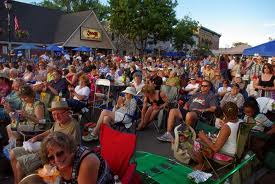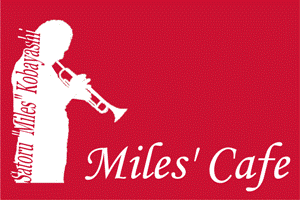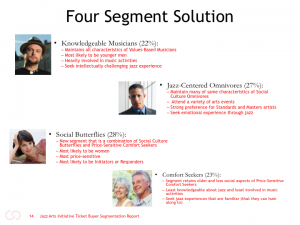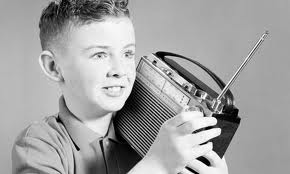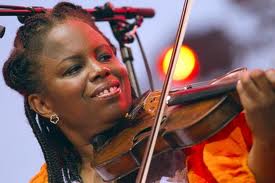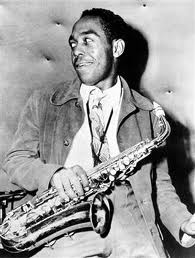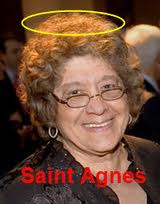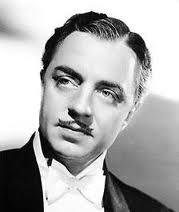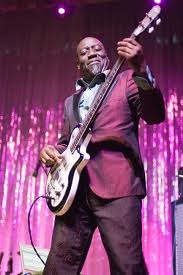Fearing Hurricane Irene, New York City has suspended public transportation and cancelled everything — but not my  online video Charlie Parker Jazz fest, a humble audio/video standin for the live sets scheduled but not-to-be in Harlem and the East Village, Saturday and Sunday, Aug 27-28. Monday, Aug. 29 is the 91st birthday of the immortal alto […]
Archives for 2011
Labor Day Jazz & Blues fests coast-to-coast; how many listening?
Jazz and blues festivals occur in America coast-to-coast over Labor Day weekend — how many listeners will the music engage? Capacities vary: free multi-day fests in Chicago and Detroit attract tens of thousands each, and the free Memphis Music & Heritage Festival; River Front Jazz Fest in Stevens Point, Wisconsin; Franklin Jazz Festival outside Nashville, Tennessee;  Big Muddy Blues Festival at Laclede’s Landing near […]
Trademark “Miles” image? Estate sues jazz club
The Miles Jazz Cafe, a low-key, off-the-mainline music loft in midtown Manhattan, is being sued by the estate of trumpeter Miles Davis for copyright infringement, citing use of the musician’s silhouette as “free-riding on the goodwill associated with the Miles Davis marks” in a way “likely to mislead the public.” The perpetually photogenic Davis was […]
Jazz audience surveyed, segmented
The jazz audience can be described by its parts: hip, participatory young artist/musicians, less experienced and cost-conscious but willing social butterflies, mid-aged and older cultural omnivores and dull-but-desirable comfort seekers, according to a segmentation study sponsored by the Jazz Audience Initiative. Some of this has been reported by NPR’s A Blog Supreme as “Actually Useful Information About the Jazz Audience” (thanks, Patrick Jarenwattananon), […]
Newport Jazz Fest via NPR #: day 2 my live reviews
11:55 am — JazzBeyondJazz attends the Newport Jazz Fest today, Aug 7, by listening on NPR, and reviewing as here it happens (tweeting #newportjazz). Ten performances are scheduled over 7 hours, and I won’t listen to everything, but will chime in with info and responses to the music and the broadcast (and I invite comments, […]
My live reviews, Newport Jazz Fest via NPR broadcast #newportjazz
I just got the bright idea of live/remote coverage of today’s music at the Newport Jazz Fest – tweeting briefly but fleshing out comments here and on Facebook — wherever people respond. Follow me @jazzbeyondjazz or #newportjazz and hear the broadcast: http://t.co/acrBBnq I’ll start at 2:45 pm – with Regina Carter’s Reverse Thread performance — […]
Radio Days: Newport Jazz fest on NPR
National Public Radio does jazz fans worldwide a huge service today (Sat., Aug 6) and tomorrow, broadcasting live from the Newport Jazz Fest. See the complete schedule and listen at NPR.org if your local station’s not carrying the feed. I’ll be tuned in from 2:45 pm EDT for violinist Regina Carter’s African-referent Reverse Thread and […]
How Madeleine Peyroux is not Charlie Parker
What does folkie chanteuse Madeleine Peyroux have to do with Charlie Parker, the alto saxophonist who has defined the past 60 years of vernacular instrumental improvisation, namesake of a two-day fest that’s NYC’s final free summer fling? Everything (not quite) is revealed in my new CityArts column . . . howardmandel.com Subscribe by Email or […]
Saint Agnes Varis gave $ to jazz, opera & Democrats, dies age 81
Agnes Varis, a major progressive philanthropist funding the Jazz Foundation of America, Jazz at Lincoln Center and the Metropolitan Opera while fighting for reduced health care costs through perscription of generic drugs and supporting a broad array of Democratic and women’s issues, died of cancer July 29 at age 81. She was officially honored as “Saint […]
Remember the Swing Era: Is poverty good for jazz?
Jazz the music will survive the wounds America has self-inflicted in the guise of deep cuts in government spending when economic growth has already slowed to a crawl. Jazz — as well as blues, rap, hip-hop, soul, bluegrass, chamber music and most rock ‘n’ roll — is fairly cheap to produce, given workers (musicians) who […]
UNESCO names pianist Herbie Hancock “goodwill ambassador”
Pianist Herbie Hancock has been appointed a “goodwill ambassador” by UNESCO. The 71-year-old multiple Grammy winner, Chicago-born child prodigy, Miles Davis’ keyboards man ushering open-form improvisation, electronic instruments and studio procedures into the past half-century of jazz-based music and talent scout with global interests joins an international coterie that currently includes Nelson Mandela, Pierre Cardin, […]
Free funk electric bassist gets $60k Pew Fellowship
Jamaaladeen Tacuma, free-funk electric bass virtuoso, protege of Ornette Coleman and one of the dancingest musicians on the planet, has been named one of 12 Philadelphia artists receiving $60,000 fellowships from the Pew Center for Arts and Heritage. Two other musicians are also 2011 Pew fellows: electronic music improviser Charles Cohen and exploratory folk/rock/goth guitarist Chris […]
Beyond music in the waters off the City
Take a night-time jazz cruise with saxophonist Avram Fefer, guitarist Joe Cohn and rhythm in New York Harbor on Wednesday nights for respite from NYC – I detail it and other unusual musical staycations for July in my new City Arts New York column. If you’ve got 10 minutes, check out my dark video of […]

